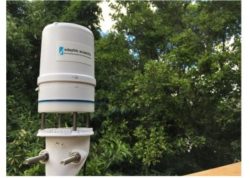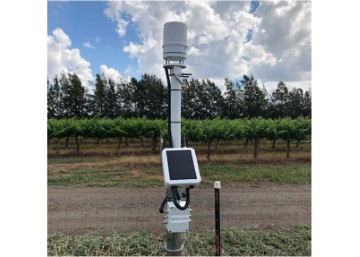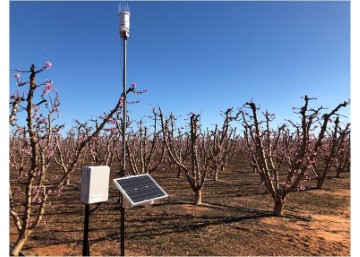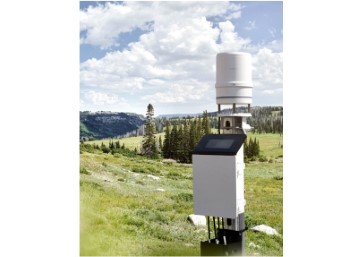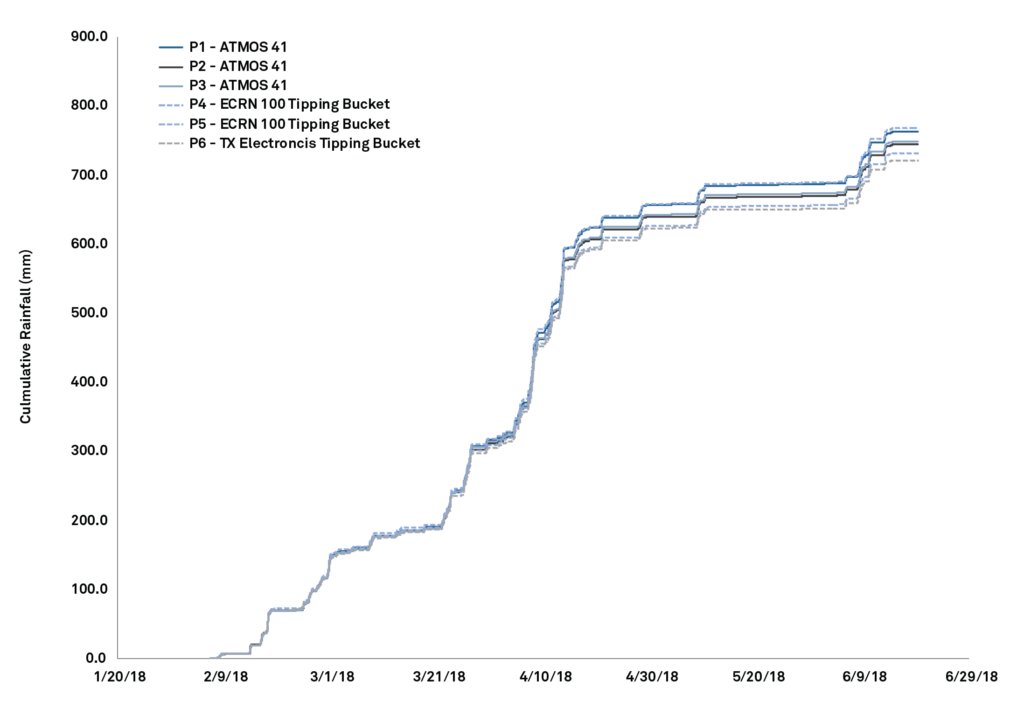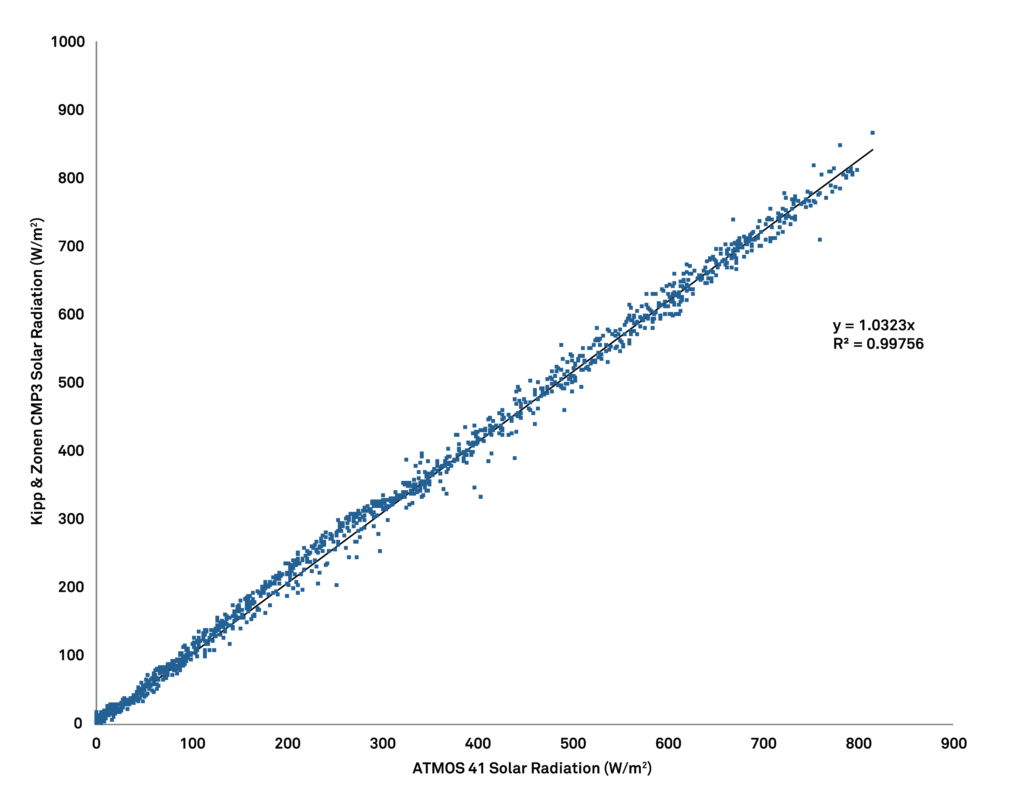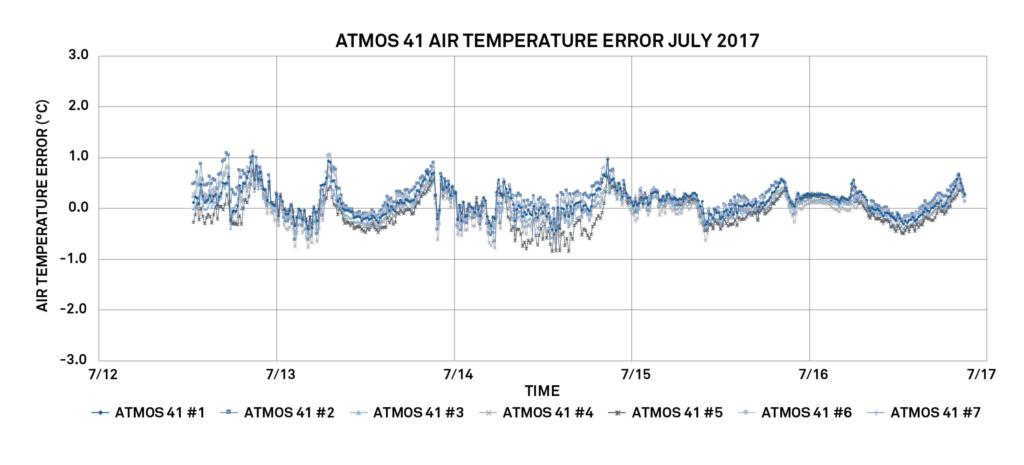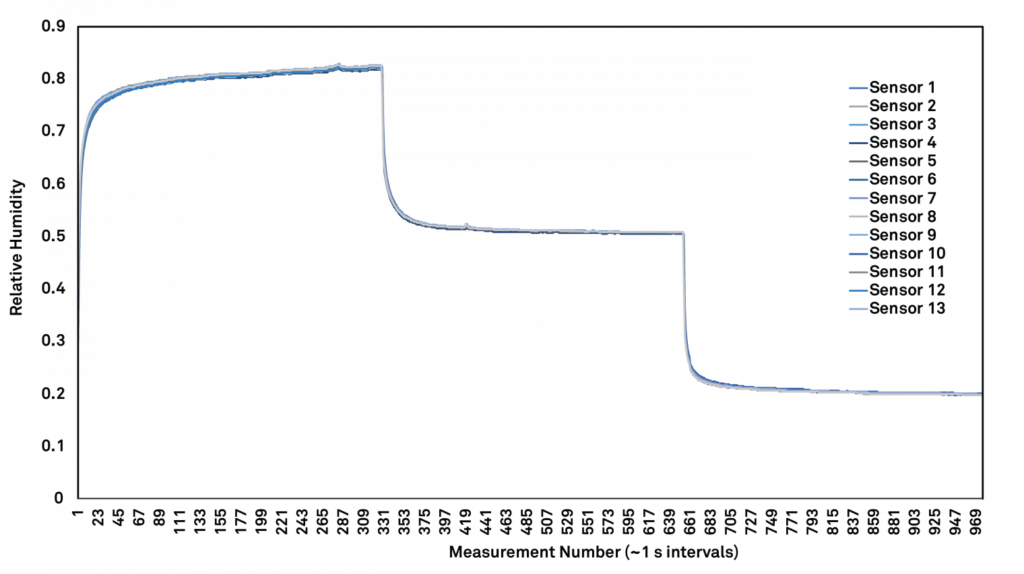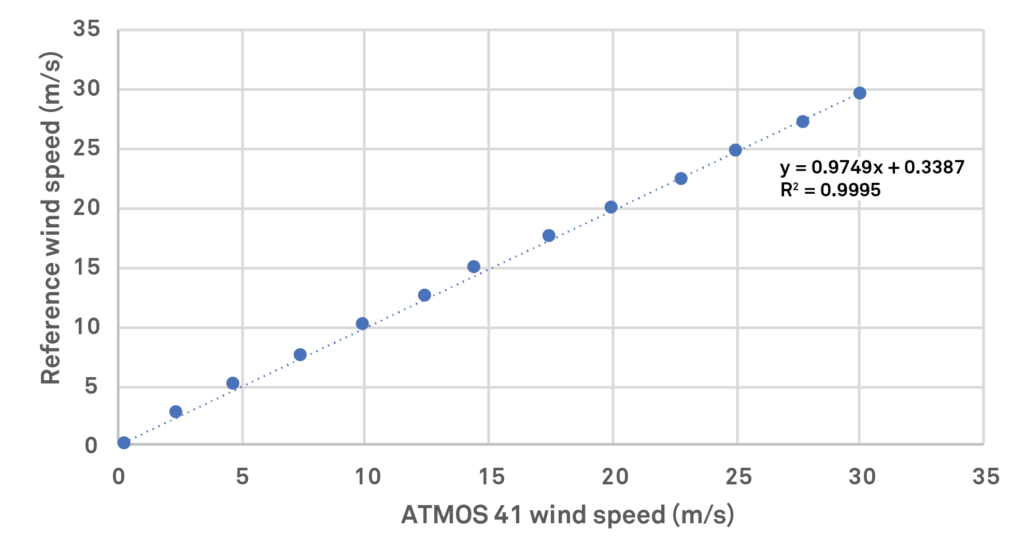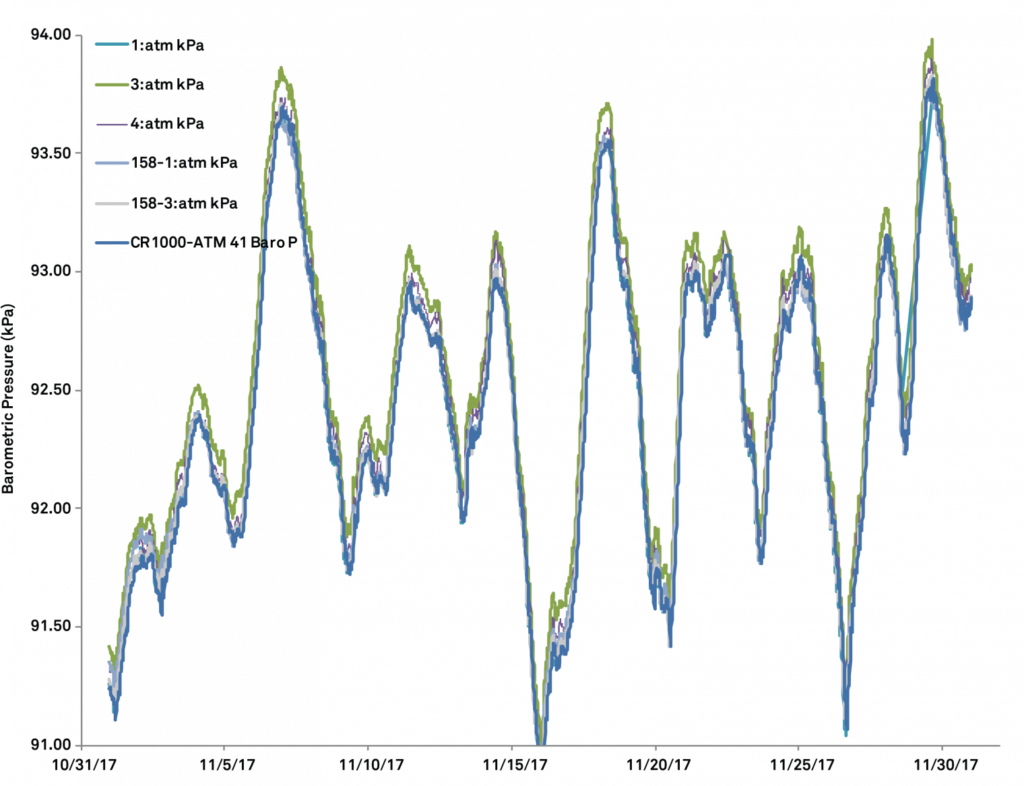the "all-in" weather station
ATMOS 41 compact weather station
overview
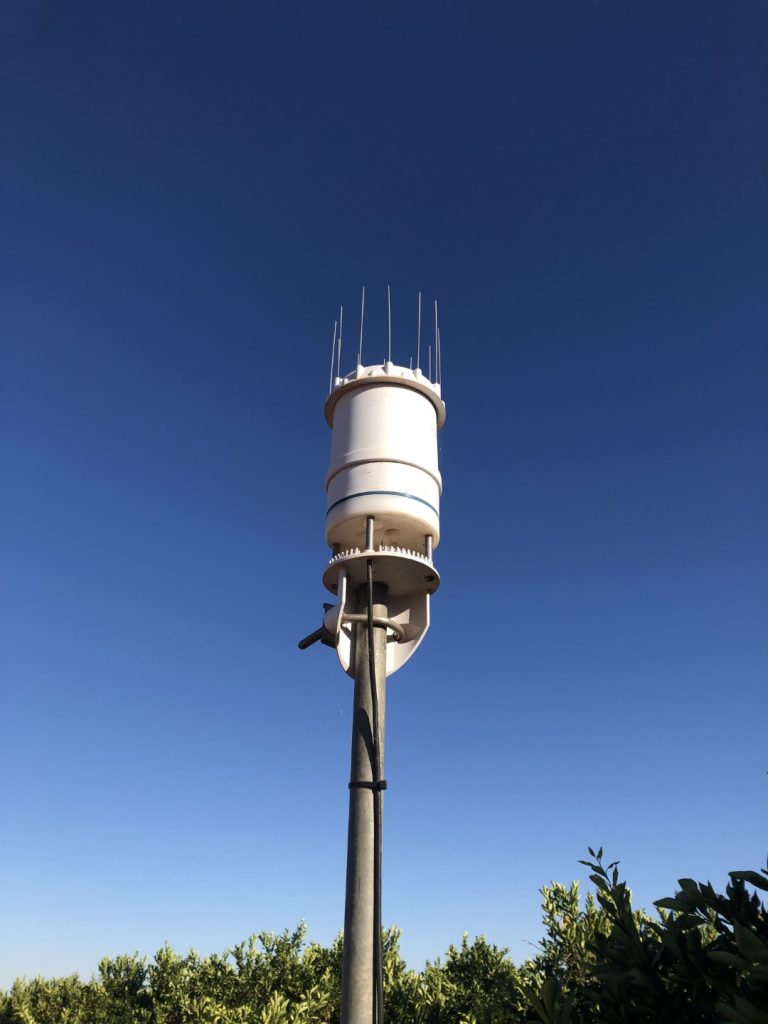 Low cost, easy to use all-in-one weather station
Low cost, easy to use all-in-one weather station- Measure rainfall, temperature, wind, solar, humidity, lightning, evapotranspiration, growing degree days, and more
- Ideal for wireless, IoT devices for researchers, growers, engineers and industry
Edaphic Scientific provides customised weather monitoring solutions via the ATMOS 41 "All-In" Weather Station.
The ATMOS 41, manufactured by METER Group, packages 12 weather sensors into a single, compact device. There are no moving parts to fail.
Installation and maintenance have been simplified to the maximum.
With a basic installation, the ATMOS 41 connects to the ZL6 series of data loggers. Simply plug in, and power off AA batteries. No programming and no wiring is involved!
Alternatively, a larger installation may include the ATMOS 41 Weather Station alongside other sensors that measure parameters including evapotranspiration, soil moisture, sap flow, plant growth and carbon allocation, canopy temperature, and more.
The ATMOS 41 is also ideal for IoT devices including LoRaWAN, NB-IoT, WiFi, and more.
The ATMOS 41 is ideal for anyone who needs to measure the weather: researchers and students, growers and agronomists, engineers and consultants. The ATMOS 41 is applied across many industries including mining, agriculture, horticulture, landfills, urban environments, meteorology, and more.
who is using the ATMOS 41?
Since its introduction in 2017, the ATMOS 41 has been rapidly adopted by many user around the world including 20,000 units across the continent of Africa!
In Australia, there are many users from scientific researchers, growers, urban managers, landfill operators, mine sites, and more.
the ATMOS 41 measures....
Air temperature, relative humidity, vapor pressure, barometric pressure, wind speed, gust and direction, solar radiation, precipitation, lightning strike counter and distance.
evapotranspiration measurements
The ATMOS 41 can measure Penman-Monteith FAO56 or ASCE reference crop evapotranspiration via the Zentra or Eagle online platforms.
Edaphic Scientific supplies everything you need so that evapotranspiration measurements are as easy as possible.
It is also possible to test your own evapotranspiration equations or models with the ATMOS 41.
Measuring evapotranspiration via the ATMOS 41 is ideal for irrigation management, hydrology, groundwater, and other applications.
a unique rainfall measurement
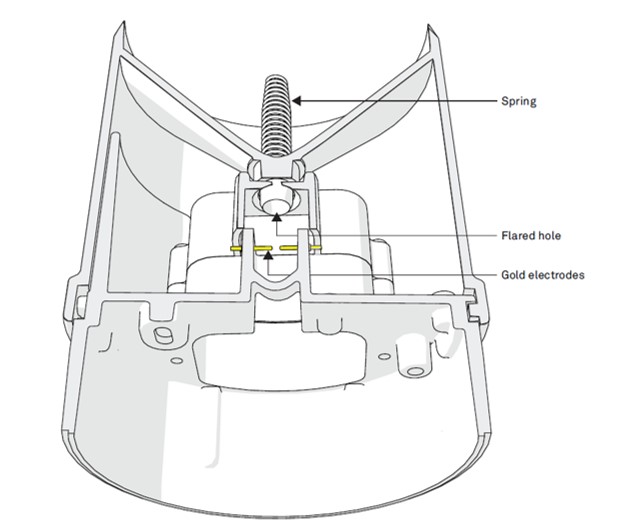
A schematic of the rain gauge inside of the ATMOS-41 weather station. Rainfall passes through the funnel into droplets which are then counted by the gold electrodes.
The ATMOS 41 introduces a unique mechanism that significantly improves the measurement of rainfall.
Other weather stations measure rainfall with a tipping bucket which are known to miss many small and large rainfall events.
The ATMOS 41 uses a unique, and precise, drip counter device that measures the amount of drops, of a known size, passing through a funnel.
The ATMOS 41 contains a 9.31-cm diameter rain gauge. During rain events, the flared hole forms the rain into drops that pass by the drip counter. The spring acts as a filter to keep out large particles but still allows enough flow so water does not back up. Gold pins measure each drop of rain. Because the flared hole forms a drop of a known size, the ATMOS 41 counts the drops and calculate the water volume. As the rain intensity increases, the drops become smaller, but the ATMOS 41 firmware contains an algorithm to automatically compensate for drop size as the rain increases.
When powered on, the ATMOS 41 counts water drops continuously and adds each drop to an accumulated total. When queried, the ATMOS 41 outputs the total rainfall (in mm) that has accumulated since the last query.
relative humidity and vapour pressure
The ATMOS 41 is a significant improvement on other temperature and relative humidity sensors because it can output RH and vapour pressure. These parameters describe important characteristics of the environment for evaporation, transpiration and water transport which are required for agriculture, horticulture and hydrology applications.
There are three components to vapour pressure: saturated vapour pressure, actual vapour pressure and vapour pressure deficit (VPD).
Saturation vapour pressure is the amount of water vapour that the air can hold.
Actual vapour pressure is the amount of water vapour that is actually in the air at the time of measurement.
Vapour pressure deficit is saturation vapour minus actual vapour pressure.
In evapotranspiration models, such as Penman-Monteith FAO56, saturation vapour pressure is defined es or eo and actual vapour pressure is defined as ea.
The ATMOS 41 outputs actual vapour pressure. This parameter was chosen as the output because actual vapour pressure is the vapour pressure of the atmosphere (not RH) that controls the rate of vapor phase water transport (e.g., evaporation, transpiration, and distribution of water vapour).
If you require an output of vapour pressure deficit (VPD), then the scientists at Edaphic Scientific can provide this parameter in the ES-SYS data logging system or we can assist you in programming this parameter into your existing data acquisition system.
As an aside, it is interesting to note that saturation vapour pressure is increasing as global temperatures increase. However, scientists have observed that actual vapour pressure has not been increasing at the same rate. Therefore, global vapour pressure deficit, VPD, has been increasing and is expected to increase with global warming. The drier atmosphere will increase rates of evaporation and transpiration as well as affecting other hydrological processes as well as photosynthesis and carbon cycles (Grossiord et al 2020).
how accurate is the ATMOS 41?
A scientific study from ETH Zurich, Switzerland, that the sensor accuracy from the ATMOS 41 is as good, or better, than traditional sensors. Below is a summary of their findings as well as comparisons with traditional meteorological sensors.
precipitation or rainfall
The ATMOS 41 employs the latest technology to improve upon traditional measurement approaches. A key innovation on the ATMOS 41 is the drop-counting rain gauge technology. It uses gold-plated electrodes to detect and count discrete drops from a nozzle precisely engineered to produce a highly repeatable drop size. This no-moving-parts technology is less susceptible to mechanical failure than traditional tipping-spoon gauges. Three tipping-spoon rain gauges (Texas Electronics and ECRN-100) were deployed at our Forks, WA USA precipitation testbed (rainiest location in lower 48 US states) alongside three ATMOS 41 sensor suites. All sensors were deployed within two meters of each other spatially at a two-meter height above ground surface. Over four months of data from the winter and spring of 2018 are shown in the figure below. Interestingly, the three tipping-spoon gauges represent the highest and two lowest accumulated rainfall totals, with all three ATMOS 41's measuring accumulated rainfall totals between the tipping-spoon gauges. Although the scatter in the tipping-spoon gauges makes drawing solid conclusions difficult, all three ATMOS 41 units agree within 3% of the average of the tipping-spoon measurements.
solar radiation
The solar radiation comparisons were made on the rooftop testbed at the METER Pullman campus. A Kipp & Zonen CMP3 was co-located with an ATMOS 41 for about a month in the fall of 2017. Readings were averaged over a 15-minute period, and the data show good agreement based on the 1:1 plot. A linear regression shows a 3% underestimation by the ATMOS 41 pyranometer.
air temperature
The ATMOS 41 uses a micro thermistor in the anemometer opening and corrects for effects of solar radiation and wind using a basic energy balance approach. Solar radiation and wind speed are combined to adjust air temperature measurement for solar heating and convective cooling instead of the common louvered radiation shield. This method was optimized and verified at the METER Pullman campus using a micro thermistor sensor housed in an Apogee TS-100 aspirated radiation shield as the air temperature standard. The verification results show a 95% confidence interval of +/- 0.6 °C for the ATMOS 41 air temperature measurement, which is significantly better than the error expected for a typical sensor housed in a non-aspirated shield. More information on the air temperature correction can be found in our webinar “Stop Hiding Behind a Shield”.
relative humidity
The improved air temperature is used to accurately correct relative humidity. All METER relative humidity sensors are individually calibrated and verified at three humidity levels against a dew point hygrometer standard. Figure 5 shows data consistency between sensors. One to 16 sensors are calibrated at a time and are held to a pass/fail criterion of 2% relative humidity at all three humidity levels. Data show excellent consistency between sensors which are typically calibrated to within 1% of the actual humidity.
Data collected in the field use the integrated relative humidity and temperature sensor to calculate vapor pressure (kPa). The figure below shows sensor performance in the field over an eight-day period and gives an idea of what to expect in terms of consistency between vapor pressure measurements.
wind speed and direction
The ATMOS 41 wind speed and direction, which is similar to the ATMOS-22 wind speed and direction sonic anemometer, were tested by a third-party ISO 17025 certified lab. Wind speed is measured by an ultrasonic anemometer with no moving parts as opposed to a cup anemometer. Wind direction is also measured by ultrasonic anemometers since there are two sonic transducers located at 90 degrees apart. The engraved N on the unit must be pointed toward True North to record accurate wind direction. Data are shown in the figure below for wind speed.
barometric pressure
Each ATMOS 41 barometric pressure sensor is individually calibrated against a NIST-traceable pressure reference. The difference between the pressure reference and the pressure sensor must be within +/- 0.1 kPa. The difference is then stored on the sensor as an offset. The figure below shows the performance of seven ATMOS 41s at the METER test bed. Differences between the top and bottom pressure are around 0.2 kPa.
videos
an introduction to the ATMOS 41...
an overview of the ATMOS 41 sensors...
20,000 ATMOS 41 stations are being installed across Africa...
specifications
| Solar radiation | Range: 0 to 1750 W/m2 Resolution: 1 W/m2 Accuracy: ± 5% |
| Precipitation | Range: 0 to 125 mm/hr Resolution: 0.017 mm Accuracy: ± 5% of measurement from 0 to 50 mm/hr |
| Air temperature | Range: -40 to 50° C Resolution: 0.1° C Accuracy: ± 0.6° C |
| Humidity sensor temperature | Range: -40 to 50° C Resolution: 0.1° C Accuracy: ± 1.0° C |
| Relative humidity | Range: 0 to 100% Resolution: 0.1% Accuracy: 3% typical, varies with temperature and humidity |
| Vapor pressure | Range: 0 to 47 kPa Resolution: 0.01 kPa Accuracy: ± 0.2 kPa typical below 40° C, varies with temperature and humidity |
| Barometric pressure | Range: 50 to 110 kPa Resolution: 0.0015 kPa Accuracy: ± 0.1 kPa |
| Wind speed | Range: 0 to 60 m/s Resolution: 0.01 m/s Accuracy: the greater of 0.3 m/s or 3% of measurement |
| Wind gust | Range: 0 to 60 m/s Resolution: 0.01 m/s Accuracy: the greater of 0.3 m/s or 3% of measurement |
| Wind direction | Range: 0 to 359° Resolution: 1° Accuracy: ± 5° |
| Compass heading | Range: 0 to 359° Resolution: 1° Accuracy: ± 5° |
| Sensor tilt | Range: 0 to 180° Resolution: 0.1° Accuracy: ± 1° |
| Lightning strike counter | Range: 0 to 65535 Resolution: 1 strike Accuracy: varies with distance, > 25% detection at <10 km typical |
| Lightning distance | Range: 0 to 40 km Resolution: 3 km Accuracy: unspecified |
manual & docs
related products

